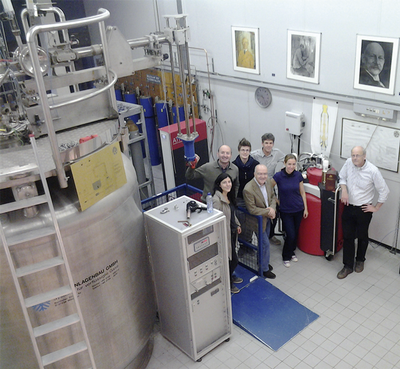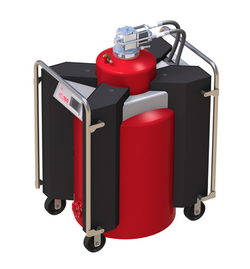
In current research, many systems require liquid helium. It is used, for example, to cool sensitive SQUID sensors (Superconducting Quantum Interference Devices) or superconducting magnetic coils. Until just recently, there were three different concepts for using devices that require liquid helium:
- Buy helium
- Upgrade system to cryogen-free configuration where possible
- Buy industrial liquefier
All three concepts have certain disadvantages, like dependence on the supplier regarding price and availability for the first concept or high investment costs and personnel requirements resulting from concept three
We now offer the compact lab-scale liquefier ATL. The ATL has been developed in cooperation with GWR Instruments, Inc., the University of Zaragoza and the Spanish National Research Council CSIC.
It can rightfully be considered a small revolution in helium supply. The purchase of an ATL can already pay off for a single helium consumer. Another possibility is to combine various systems and cover the helium demand of an entire institute. The purchase of an ATL system has a very reasonable payback period. It is particularly suited for medium consumption from about 10 l to little more than 100 l per day.
Just lately, we have installed our first systems in Germany (University of Muenster) and the Netherlands (University of Leiden).
MEG application at the University of Muenster
MEG stands for magnetoencephalography. It derives from the Greek words “encephalon” and “gráhein”, which mean brain and write. An MEG system measures the magnetic fields connected with the neurophysiological activity of the brain
During the measurement, the patient has his head in a dewar that is equipped with SQUID sensors to measure these fields. The highly sensitive sensors are necessary to detect magnetic fields in the femto-tesla range in an active brain and must be cooled with liquid helium. One femtotesla equals 10 - 15 Tesla and is about nine magnitudes smaller than the earth’s gravitational field (approx. 50 mT in central Europe). This is why an MEG system is placed in a shielding chamber which suppresses external fields and thus provides a magnetically stable environment.
Professor Christo Pantev is head of the Insitute of Biomagnetism and Biosignalanalysis at the University of Muenster. One of his research areas is auditory systems. For his research, he uses an MEG system which was equipped with one of our ATL liquefiers in mid-November of last year. The ATL is situated outside the shielding chamber and, with a liquefaction rate of > 20 l/day, perfectly suits the typical MEG helium consumption. The ATL is connected to the MEG dewar via a direct recovery line. We are very happy to count a renowned scientist like Professor Pantev among our ATL customers. An ATL system not only saves a vast amount of money compared to the repeated purchase of liquid helium, but also secures a continuous helium supply.

University of Leiden
The Cryogenic Department in Leiden is home to a major stepstone in the history of modern sciences. It was here that Heike Kamerlingh-Onnes first liquefied helium in 1908. Today, it hosts one of our ATL liquefiers. The ATL supports an industrial liquefier and can be used flexibly.
Our customer in Leiden became aware of our ATLs through the University of Zaragoza, who took part in the development of the ATLs and has been involved as system beta tester for a number of years.
Contact:
Dr. Wilfred van der Geest, Cryogenic Department LION, University of Leiden.


